Years of service 1914–45 Name Helmuth Pannwitz | ||
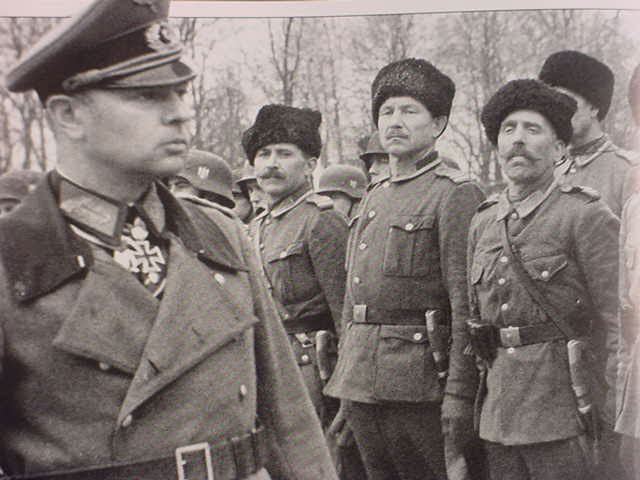 | ||
Born 14 October 1898Botzanowitz, Province of Silesia, Kingdom of Prussia, German Empire now Bodzanowice, Opole Voivodeship, Poland ( 1898-10-14 ) Battles/wars World War IWorld War II Commands held XV SS Cossack Cavalry Corps | ||
Helmuth von Pannwitz (14 October 1898 – 16 January 1947) was a German general who distinguished himself as a cavalry officer during the First and the Second World Wars. Later he became Lieutenant General of the Wehrmacht and Supreme Ataman of the XV SS Cossack Cavalry Corps. He was executed in Moscow for war crimes in 1947 of which he has been rehabilitated by the military prosecutor in Moscow in April 1996 almost fifty years after his death. The reversal of the conviction of Pannwitz was itself overturned in June 2001.
Contents
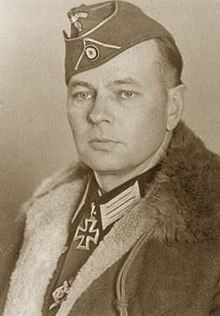
Early life
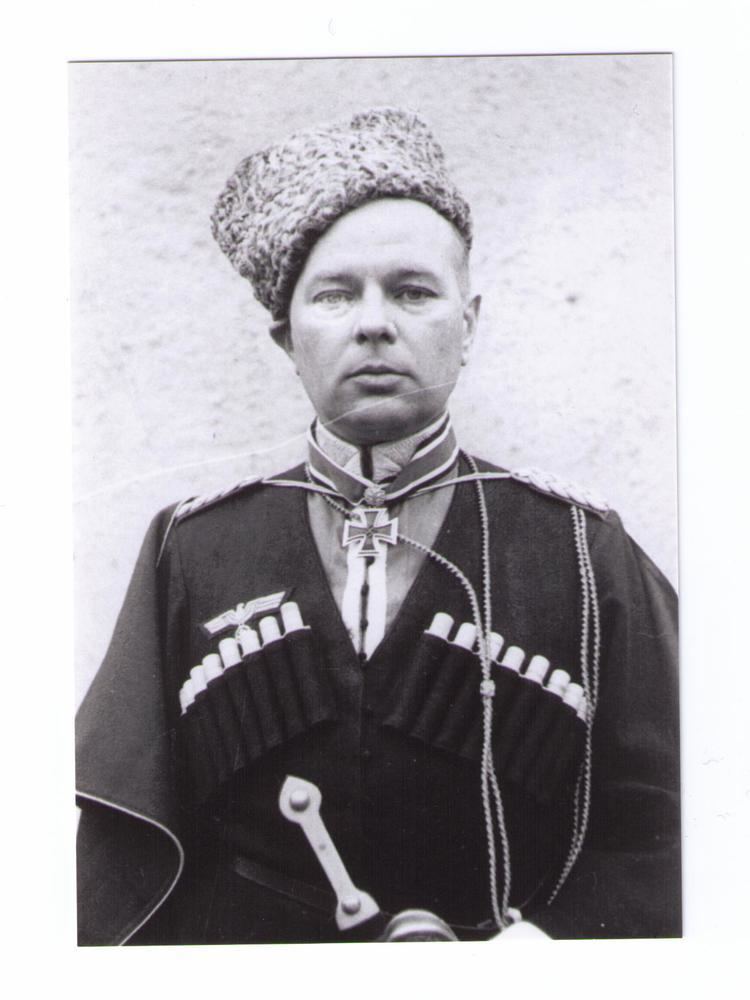
Pannwitz was born into a family of Prussian nobility on his father's estate Botzanowitz (today Bodzanowice), Silesia, near Rosenberg (today Olesno), now part of Poland but directly on the German-Russian border of that time. His family was originally from the village of Pannwitz in Lusatia. From the 14th to 16th century the family held the office of Burggraf of Glatz.
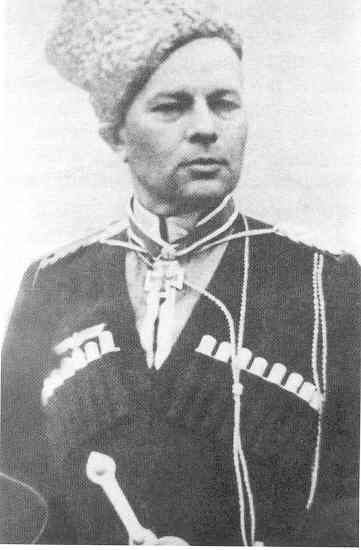
Aged twelve, he entered the Prussian cadet school in Wahlstatt, near Liegnitz in Silesia, and later the main cadet school at Lichterfelde. Even before outbreak of World War I he was attracted by exhibitions of Cossack units that were organized in the neighboring towns of the Russian Empire.

As an officer cadet, Pannwitz upon the outbreak of the First World War joined the Imperial German Army as a volunteer (1st Regiment of Lancers, based at Militsch), in the course of which he was at the age of sixteen promoted to the rank of Leutnant (second lieutenant/cornet) and decorated with the Iron Cross Second Class in the same year (and, a year later, the First Class) for bravery in action. Immediately after the war he fought in the ranks of the Volunteer Corps (Freikorps) against Polish separatists in Silesia and participated in the Kapp Putsch. Wanted as a suspect in the murder of a Social-Democrat, Bernhard Schottländer, in Breslau, he fled to Poland. Under an assumed name, Pannwitz became a leader in the Black Reichswehr in 1923 where he was involved in a number of Feme murders. In the aftermath of the failed Küstrin Putsch, Pannwitz fled again to Poland. After spending a year in Hungary, Pannwitz went to Poland in 1926, where he lived and worked as an administrator of farms, at the last in charge of the estates of Princess Radziwill in Młochów, near Warsaw.
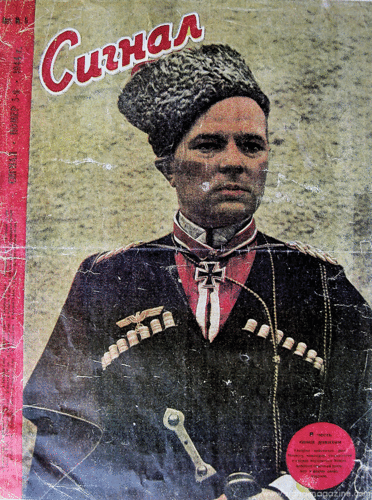
When an amnesty was granted in 1931, Pannwitz returned to Germany where in 1935 he rejoined the German Army as a Rittmeister (captain) and cavalry squadron commander in the 2nd Cavalry Regiment in Angerburg, East Prussia. In 1938, when Austria became part of Germany, he was transferred to Austria and became detachment commander with the 11th Cavalry Regiment at Stockerau near Vienna, being promoted to the rank of Major at the same time. World War II found him as the commander of the reconnaissance detachment of the 45th Infantry Division in Poland and France.
World War II
On active service again in World War II, Pannwitz was awarded "bars" to his previous decorations and in August 1941 was awarded the Knight's Cross of the Iron Cross. He received the Oak Leaves as an Oberst (colonel) a year later for successful military leadership, when he was in command of a battle group covering the southern flank in the battle of Stalingrad.
Pannwitz was instrumental in establishing a Cossack force, Cossack Cavalry Brigade, which was formed on 21 April 1943. The unit conducted anti-partisan operations in Ukraine and Belarus, and was then moved to fight against Yugoslav partisans. During punitive operations in Serbia and Croatia, the Cossack regiments under Pannwitz's command committed a number of atrocities against the civilian population including several mass rapes and routine summary executions. An order of General von Pannwitz dated October 20, 1943, made absolutely clear to all under his command that any crime of that kind would result in the death penalty.
At the award ceremony in Berlin when Pannwitz received the "Oak Leaves" for his Knight's Cross on January 15, 1943, he told Hitler that the official Nazi policies which caused Slavs to be regarded as subhumans (Untermenschen) were totally unhuman and wrong.
During the summer of 1944 the two brigades were upgraded to become the 1st Cossack Division and 2nd Cossack Cavalry Division. On February 25, 1945, these divisions were combined to become XV SS Cossack Cavalry Corps.
Because of the respect he showed for his troops and his tendency to attend Russian Orthodox services with them, Pannwitz was very popular with his Cossack troops. Before the end of the war, he was elected Feldataman (German rendering of Supreme Ataman, the highest rank in the Cossack hierarchy and one that was traditionally reserved for the Tsar alone.)
By the end of the war, the SS took control of all foreign units within the German forces. The Himmler file in the Imperial War Museum contains a record of a conversation which occurred on August 26, 1944, between Himmler, General von Pannwitz, and his Chief of Staff, Colonel H.-J. von Schultz. An agreement was reached that the Cossack divisions, soon to be the Cossack Corps, would only be placed under SS administration in terms of replacements and supplies. However, by February 1, 1945 the corps was transferred to the Waffen-SS. Despite the refusal of General von Pannwitz to enter the SS, the corps was placed under SS administration and all Cossacks became formally part of the Waffen-SS.
Aftermath
Pannwitz surrendered on May 11, 1945, to British forces (8th Army`s 5th Corps) near Völkermarkt in Carinthia, Austria, and tried to ensure that his men would remain in the custody of the Western Allies. By mid-May, however, it was obvious that the Cossacks would be handed over to the Soviet Union.
Pannwitz was a German national, and under the provisions of the Geneva Convention not subject to repatriation to the Soviet Union. But on May 26, he was deprived of his command and placed under arrest while the forcible loading of the Cossacks into trucks began and continued through the following days. Although many escaped from their camps following these actions, General v. Pannwitz and many of his German officers shared the uncertain fate of the Cossacks, so these Germans surrendered with the Cossacks to Soviet authorities at Judenburg.
Execution
Pannwitz was executed in Moscow on January 16, 1947, having been convicted by a military tribunal of war crimes in the Soviet Union.
Attempted rehabilitation
Almost fifty years later, on April 23, 1996, during the Russian presidency of Boris Yeltsin, members of the Pannwitz family petitioned for a posthumous reversal of the 1946 conviction. The Military High Prosecutor in Moscow subsequently determined that Pannwitz was eligible for rehabilitation as a victim of Stalin-era repression. On June 28, 2001, however, rehabilitation was reversed in a ruling that disputed jurisdiction of the 1996 proceedings, and Pannwitz's conviction for military crimes was reinstated.
